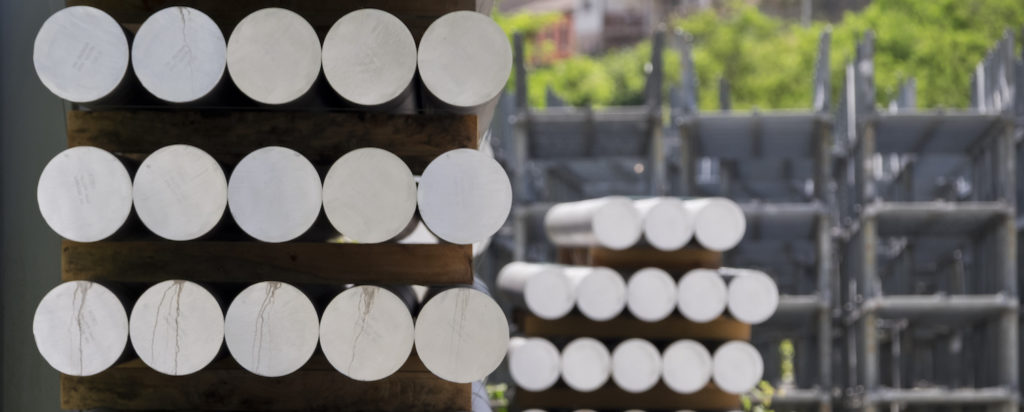ALUMINUM
Aluminum is a non-ferromagnetic metal with the symbol “Al” and atomic number 13. Aluminum compounds constitute 8% of those that make up the Earth’s crust, being the third most common element found in said crust and is present in most rocks, vegetation and animals.
Aluminum is extracted only from the mineral known as bauxite by transformation into alumina, through the Bayer process, in a first process and then into metallic aluminum through the electrolysis process. Its low density, 2,698.4 hg/m3, and its high corrosion resistance provide it with properties that make it very useful for different sectors and for very varied purposes.

Despite requiring a very high amount of electrical energy to obtain, it is a malleable, fireproof, good conductor, easy to mechanize, cheap and 100% recyclable material without loss of quality, which is why it has exceptional results in its infinite lives. It was first isolated in 1825 by the Danish physicist H. C. Ørsted.
Multipurpose material, with great industrial use and numerous applications in different sectors.
Multipurpose material, with great industrial use and numerous applications in different sectors.
The industrial use of this metal has made it one of the most important in very diverse economic fields, only surpassed today by iron/steel. Aluminum is used in pure form, alloyed with other metals or in non-metallic compounds.
Its optical properties can be used to make reflecting mirrors or telescopes; Thanks to its malleability, it is used for the manufacture of cans, tetrabricks or aluminum foil as food packaging. Due to its electrical properties, it is capable of competing in cost and performance with traditional copper, and alloyed with other metals it is used to create structures for architecture, industria, automoción y calderería entre otros.
MECHANICAL PROPERTIES
Soft and malleable material that has the ability to serve as an insulator against the oxidation process, which makes it ideal for the manufacture of electrical cables and thin sheets. It is alloyed with other metals, which allows casting, forging and extrusion operations to be carried out.


